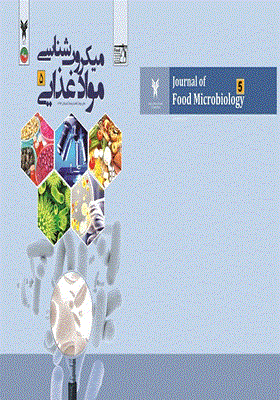-
-
List of Articles
-
Open Access Article
1 - Survey on antibacterial effect of Padina sp. and Sargassum sp. collected from the coastal areas of Bushehr port on Vibrio cholera and Escherichia coli isolated from water
Alireza Golchin Manshadi برهان مال الهی محمد ترحمی -
Open Access Article
2 - The effect of chitosan coating contained lemon essential oil on microbial quality of rainbow trout
Reza sharafati chaleshtori محسن تقی زاده صفورا میری زهره اسدی محدثه عبدی پور وحیده شیری -
Open Access Article
3 - Editorial Board
-
Open Access Article
4 - Synthesis and Characterization of Ag/Chitosan Nanobiocomposite by Chemical Method and Investigation of its Application for Food Packaging
Saeideh Ebrahimi asl Amir Zarei -
Open Access Article
5 - Isolation of Shiga toxin-producing E. coli (STEC) and antibiotic resistance pattern determination and tracking virulence genes in the salad samples collected from Chaharmahal and Bakhtiari province and Isfahan
Hamidreza Bahrami محمد ربیعی فرادنبه -
Open Access Article
6 - Study of coliform bacteria contamination of ice factory in urmia city
Nahid Navidjoy Anahita Dehghani Farshad Bahrami Jafar Ghasemi Sima Karim Zadeh -
Open Access Article
7 - Evaluation of antibacterial effects of some plant extracts and essential oils against Vibrio parahaemolyticus
Mehdi Raissy Ali Daghaghelelh Mojtaba Alishahi Mehdi Rahimi -
Open Access Article
8 - Antibacterial activity of acetonic, ethanolic and methanolic olive leaf extracts of four Iranian cultivars against Escherichia coli
Maryam Abbasvali Mahmoud Esmaeili Koutamehr Hamdollah Moshtaghi Mohammad Eskandari -
Open Access Article
9 - Table of Contents
-
Open Access Article
10 - Prevalens of entrocins produced by Entrococcus fecalis isolated from dairy products in Shahrekord city
Elaheh Barzam الهه تاج بخش Ebrahim Rahimi
-
The rights to this website are owned by the Raimag Press Management System.
Copyright © 2021-2025







